People
Anish Kapoor Owns the Rights to the Blackest Color Ever Made. So Another Artist Made His Own Superblack—and Now It’s Even Blacker
Anyone is allowed to use Stuart Semple's new Black 3.0—except Kapoor.
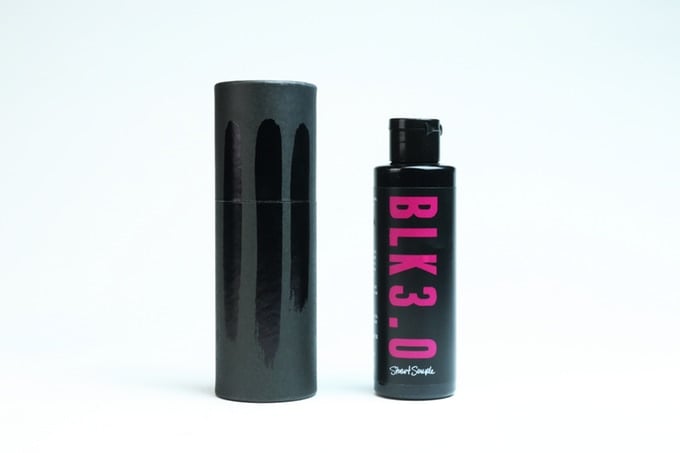
Anyone is allowed to use Stuart Semple's new Black 3.0—except Kapoor.

Sarah Cascone

In the battle over artistic access to the world’s blackest blacks, Stuart Semple isn’t backing down. The British artist, who took exception to Anish Kapoor’s exclusive contract to use Vantablack, the world’s blackest black substance, just launched a Kickstarter to produce a super dark paint of his own—and it has now been fully funded.
Black 3.0 is “the blackest, the mattest paint in the known universe,” Semple said in the Kickstarter video for the new paint, which reportedly absorbs up to 99 percent of all light, compared to 99.96 percent for the original Vantablack. “It’s like a black hole or a void in a bottle.”
The Kickstarter funds will be used to employ a factory to produce Black 3.0 in bulk through pre-orders of the paint. “Unfortunately, this stuff is so advanced and way beyond what we can make here in our little studio,” Semple said. (His team of artists and paint makers currently works out of a studio in Dorset, on the south coast of England.)
As its name suggests, this is Semple’s third effort to create an ultra-black black. After soliciting input from the artistic community, he introduced the cherry-scented Black 2.0 in March 2017. He’s spent the past two years working to improve on that effort. Now, after a successful round of beta testing, which saw samples sent to 1,000 artists, Semple is ready to share his latest creation with the world—except Kapoor, of course.
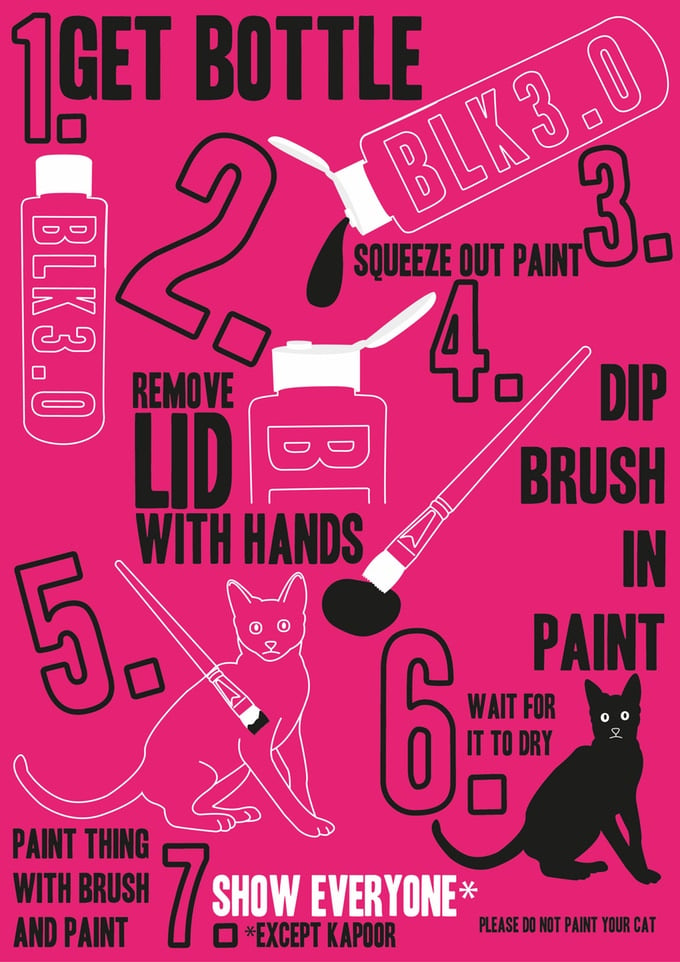
A graphic about Black 3.0. Image courtesy of Stuart Semple.
The first paragraph of the Kickstarter’s “about” section makes this abundantly clear:
Important: By backing this project you confirm that you are not Anish Kapoor, you are in no way affiliated to Anish Kapoor, you are not backing this on behalf of Anish Kapoor or an associate of Anish Kapoor. To the best of your knowledge, information and belief this material will not make its way into the hands of Anish Kapoor.
Semple has been making his own pigments for personal use for the past 20 years. When he found out about Kapoor’s exclusive deal with Vantablack producers Surrey NanoSystems, Semple was outraged. It also occurred to him that he hadn’t been offering others the chance to experiment with his custom-made art supplies.
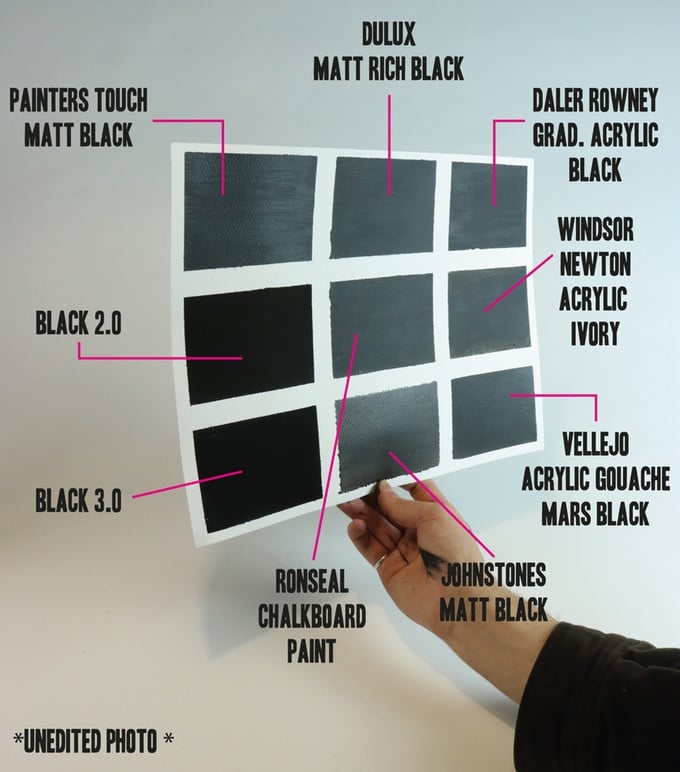
A chart comparing Black 3.0 to other black paints. Image courtesy of Stuart Semple.
That’s when Semple started selling what he called “the world’s pinkest pink, available to anyone who wasn’t Kapoor.”
“I wanted to make a point about elitism and self-expression and the fact that everybody should be able to make art,” Semple said. But within weeks, “tragedy struck. Anish Kapoor got our pink! And he dipped his middle finger in it and put a picture on Instagram!”
Undeterred by Kapoor’s mockery of the product’s terms of service, Semple returned again with the most glittery glitter and color-changing Phaze “unicorn” paint, with the same use restrictions. (He’s also developed a compostable plant-based glitter as an environmentally friendly alternative to glitters made of microplastics.)
But even after the success of Black 2.0—more than 3,500 people have posted about it on Instagram under the hashtag #sharetheblack—Semple knew he could do more to eliminate the reflective quality that plagues traditional black pigments (think of how coal and charcoal are both slightly shiny, for instance).
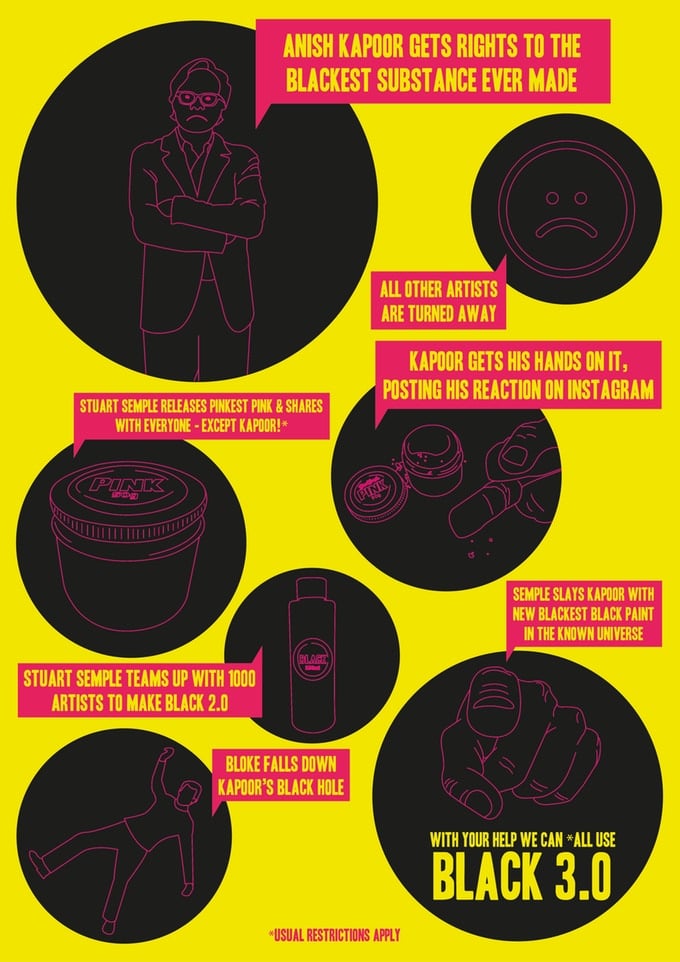
Stuart Semple breaks down the genesis of his Vantablack-fueled feud with Anish Kapoor. Image courtesy of Stuart Semple.
As opposed to Vantablack’s “military nanotech-grade super NASA stuff,” said Semple, Black 3.0 is an acrylic paint that can be easily used in conjunction with traditional art materials. It’s based on a new Black Magick pigment that his team developed in the lab that is naturally matte. (Black 2.0 included a mattifier with a slight grey tint.)
“We’ve also managed to formulate a new acrylic polymer to hold the pigment, it’s special because it has more available bonds than any other acrylic polymer being used in paints. This means it can cling onto way more pigment,” reads the Kickstarter page, which also touts Black 3.0’s nano-mattifiers, which “flatten out the last bits of stray light without compromising color.”
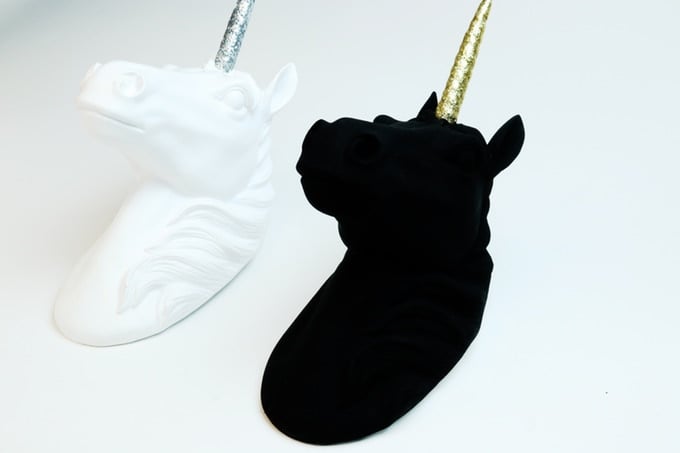
Black 3.0 applied to a sculpture. Image courtesy of Stuart Semple.
Scientists have also taken steps to thwart Kapoor’s Vantablack monopoly. NanoLab, Inc., in Waltham, Massachusetts, unveiled a carbon nanotube black paint of its own, called Singularity Black, in August 2017.
As of press time, Semple had already raised $55,430, or an impressive 169 percent of his original $32,720 goal, which he hit after just 38 hours.